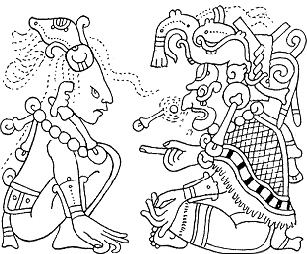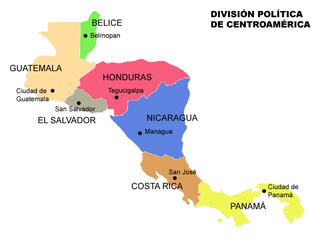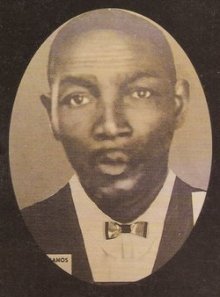
Belize is a country on the north-eastern coast of Central America. It is bordered by Mexico to the north, the Caribbean Sea to the east, and Guatemala to the west and south. It also shares a water boundary with Honduras to the southeast.

Dangriga, formerly known as Stann Creek Town, is a town in southern Belize, located on the Caribbean coast at the mouth of the North Stann Creek River. It is the capital of Belize's Stann Creek District. Dangriga is served by the Dangriga Airport. Commonly known as the "culture capital of Belize" due to its influence on punta music and other forms of Garifuna culture, Dangriga is the largest settlement in southern Belize.
The Garifuna people are a people of mixed free African and Amerindian ancestry that originated in the Caribbean island of Saint Vincent and speak Garifuna, an Arawakan language, and Vincentian Creole.
Garifuna music is an ethnic music and dance with African, Arawak, and Kalinago elements, originating with the Afro-Indigenous Garifuna people from Central America and Saint Vincent and the Grenadines. In 2001, Garifuna music, dance, and language were collectively proclaimed as a Masterpiece of the Oral and Intangible Heritage of Humanity by UNESCO.

Guatemalans are people connected to the country of Guatemala. This connection may be residential, legal, historical or cultural. For most Guatemalans, several of these connections exist.

Punta is an Afro-indigenous dance and cultural music of the Garifuna originating prior to their exile to Roatan from the Caribbean island of Saint Vincent And The Grenadines. Which is also known as Yurumei. It has African and Arawak elements which are also the characteristics of the Garifuna language. Punta is the best-known traditional dance belonging to the Garifuna community. It is also known as banguity or bunda.
Garifuna (Karif) is a minority language widely spoken in villages of Garifuna people in the western part of the northern coast of Central America.
Hunguhungu or fedu is a form of traditional swaying circular dance performed by the women of the Garifuna people of Belize, Honduras, Nicaragua and Guatemala. The music for the dance is composed of rhythmic themes performed by three drummers with alternating call-and-response chanting, and displays a clear African heritage. It is sometimes combined with punta.
Maya medicine concerns health and medicine among the ancient Maya civilization. It was a complex blend of mind, body, religion, ritual and science. Important to all, medicine was practiced only by a select few, who generally inherited their positions and received extensive education. These shamans acted as a medium between the physical world and spirit world. They practiced sorcery for the purpose of healing, foresight, and control over natural events. Since medicine was so closely related to religion, it was essential that Maya medicine men had vast medical knowledge and skill.

Death rituals were an important part of Maya religion. The Maya greatly respected death; they were taught to fear it and grieved deeply for the deceased. They also believed that certain deaths were more noble than others.

Central America is a subregion of the Americas formed by six Latin American countries and one (officially) Anglo-American country, Belize. As an isthmus it connects South America with the remainder of mainland North America, and comprises the following countries : Belize, Guatemala, Honduras, El Salvador, Nicaragua, Costa Rica, and Panama.

Hondurans are the citizens of Honduras. Most Hondurans live in Honduras, although there is also a significant Honduran diaspora, particularly in the United States, Spain, and many smaller communities in other countries around the world.
Belize, on the east coast of Central America, southeast of Mexico, was inhabited by the indigenous peoples who fought off the Spaniards in an attempt to preserve their heritage and to avoid the fate of their neighbors who were conquered and under Spanish rule. While this was going on, British pirates would rob Spanish merchant ships and navigate through the shallow waters and small islands even going up river later to hide their bounty. The indigenous people of Belize did not resist the British like they did the Spanish. In the 17th century, however, the British settlement became a formal British crown colony from 1862 through 1964, where they first achieved self government and later in 1981 became an independent country recognized globally with all its territory intact. The British brought along with them slaves taken from Congo and Angola during the eighteenth century.

The history of Belize dates back thousands of years. The Maya civilization spread into the area of Belize between 1500 BC to 1200 BC and flourished until about 1000 AD. Several Maya ruin sites, including Cahal Pech, Caracol, Lamanai, Lubaantun, Altun Ha, and Xunantunich reflect the advanced civilization and much denser population of that period. The first recorded European incursions in the region were made by Spanish conquistadors and missionaries in the 16th century. One attraction of the area was the availability of logwood, which also brought British settlers.

Belizeans are people associated with the country of Belize through citizenship or descent. Belize is a multiethnic country with residents of Ethnic groups of Amerindian, African, European, Asian and Middle-eastern descent or mixed race with any combination of those groups.

This is an index of Central America-related articles. This index defines Central America as the seven nations of Belize, Costa Rica, El Salvador, Guatemala, Honduras, Nicaragua, and Panama.

Thomas Vincent Ramos, commonly known as T. V. Ramos, was a Belizean civil rights activist who promoted the interests of the Garifuna people, and is now considered a national hero.

An Afro-Guatemalan person is a person who lives in Guatemala, but has African decency in their historical and cultural roots. This term intertwines the conquest of America by the Spanish. The Afro-Guatemalan population is not numerous today. Although it is difficult to determine specific figures, it is reported that Afro-Guatemalans represent only between 1% and 2% of the country's population. According to the Council on Hemispheric Affairs. They are of mainly English-speaking West Indian (Antillean) and Garifuna origin. They are found in the Caribbean coast, in Livingston, Puerto Barrios and Santo Tomas. In the 17th century, many enslaved blacks were able to secure for themselves or at least their future children through marriage to free people. Many of these marriages were with Mayans or Europeans, which created a mix between blacks, Mayans and Europeans. This resulted in a significant mestizo population that, over the years, has continued to dilute traces of African ancestry in many cases. Today this can be referred to as Afro-mestizos due to miscegenation.

Afro-Hondurans or Black Hondurans are Hondurans of Sub-Saharan African descent. Research by Henry Louis Gates and other sources regards their population to be around 1-2%. They descended from: enslaved Africans by the Spanish, as well as those who were enslaved from the West Indies and identify as Creole peoples, and the Garifuna who descend from exiled zambo Maroons from Saint Vincent. The Creole people were originally from Jamaica and other Caribbean islands, while the Garifuna people were originally from Saint Vincent and the Grenadines. Garifunas arrived in the late seventeen hundreds and the Creole peoples arrived during the eighteen hundreds. About 600,000 Hondurans are of Garífuna descent that are a mix of African and indigenous as of Afro Latin Americans. Honduras has one of the largest African community in Latin America.

Garifuna Americans or Black Carib Americans are Americans of African, Arawak, and Kalinago ancestry that originated in the Caribbean island of Saint Vincent and the Grenadines. Garifuna Americans whose ancestors were exiled from the Island trace their roots to the Central American countries of Honduras, Belize, Guatemala, and Nicaragua, while those whose ancestors remained in the island trace their roots to Saint Vincent and the Grenadines. The term refers to someone with full or partial Garifuna heritage who was born in the United States.









